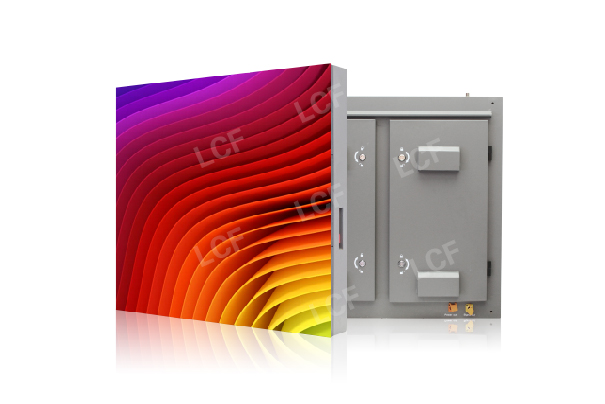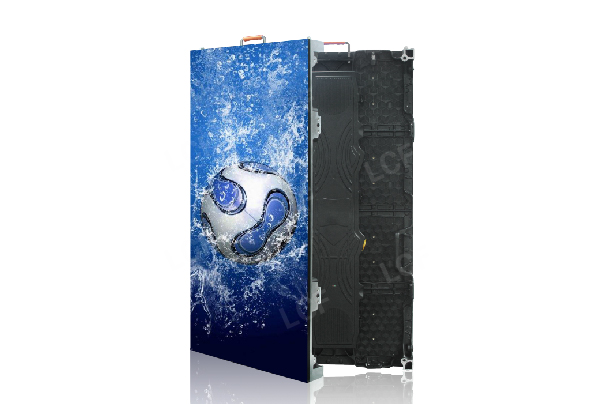Publisher: Supplier of LED Display Time: 2017-12-09 Views: 4919

1. Multiple modules of the LED display screen are not lit continuously or are abnormal: check whether the cable and power cable of the first abnormal module in the signal direction are in good contact. Check the power supply part (you can check it with a multimeter), if there is a pattern (with bright spots with chaotic colors), it means that the module has no signal input, please check whether the input end of the first abnormal module's cable is in close contact, and you can unplug it several times. Plug and test, if the problem still exists, you can replace the new cable.
2. Single module does not light up: Check whether the power supply of the module is good, mainly to check whether the power socket on the module is loose. If the color of the whole module is chaotic or inconsistent (but there is signal input, there is a correct picture), the signal transmission line is in poor contact, re-plug the cable, or replace the tested cable. If you still have the same problem after replacing a good flat cable, please check whether there is a problem with the interface of the PCB board.

3. Detection method for the problem of single light not on: Use a multimeter to check whether the LED is damaged. If the light is broken, replace the light according to the fifth item below. Specific light measuring method: turn the multimeter to the resistance X1 gear, the black pen of the pointer multimeter is connected to the positive pole of the LED, and the red pen is connected to the negative pole (the black pen of the digital meter is connected to the negative, and the red pen is connected to the positive), if the LED is on, the measured light is OK, if the light doesn't come on, the light under test is bad.
4. LED dead point maintenance (out-of-control point): After the single lamp test confirms that the LED is damaged, the following maintenance methods are selectively adopted according to the actual needs.
1. Front maintenance: Use the corresponding type of screwdriver to remove the fixed mask screws from the front (be careful to keep the screws), remove the mask, and replace the lamp (please change the lamp according to the following method of changing the lamp). , restore the original mask, tighten the screws (please be careful not to hold down the lamp when screwing on the screws), and remove the glue carefully if any glue remains on the surface of the LED.
2. Rear maintenance: Use the corresponding type of screwdriver to remove the screws from the back (be careful to keep the screws), and unplug the signal cable. For safety, please do not unplug the power cable to prevent accidents. Carefully remove the module from the sheet metal. Take it out of the hole, move it to the back of the box, and then follow the front maintenance method to maintain and replace the lamp for a single module (please replace the lamp according to the following lamp replacement method) or repair others.
Fifth, change the lamp: remove the colloid around the damaged LED with a sharp tool (such as tweezers), and make the LED pins clearly exposed in the sight, clamp the LED with tweezers in the right hand, and use a soldering iron (the temperature is about 40 degrees) Excessive temperature will cause damage to the LED) contact the solder, and stop for a while (no more than 3 seconds, if it exceeds the time but does not meet the disassembly requirements, please cool down and try again) to melt the solder and remove the LED with tweezers. Insert the LED light that meets the requirements into the hole of the PCB circuit board correctly, (the long foot of the LED light is the positive pole, the short foot is the negative pole, the "square hole" on the PCB is the LED positive pin jack, and the "round hole" is the LED's Negative pin jack), melt a little solder wire, stick it on the tip of the soldering iron, adjust the direction of the LED with tweezers to make it stable, solder the solder to the connection between the LED and the PCB, use the same type of colloid (PH value = 7) Seal the LEDs.
During the operation of the outdoor full-color LED display, the operator of the display should also pay attention to the inspection to observe whether there are abnormal sounds, odors, abnormal light and other phenomena. use. It should be noted that if the surface mount LED display is not used for a long time, the reliability performance will be reduced. It is recommended to use it for more than two hours a week to reduce the erosion of the LED display by moisture.